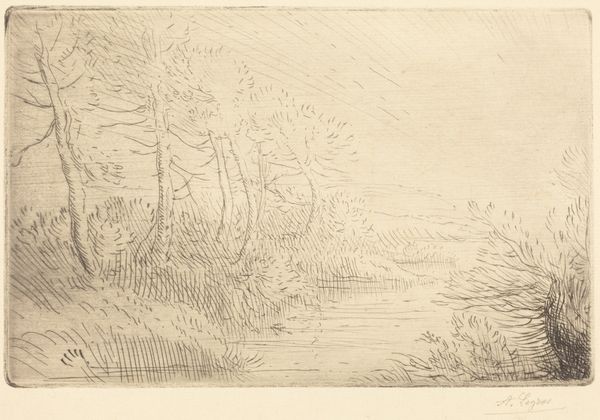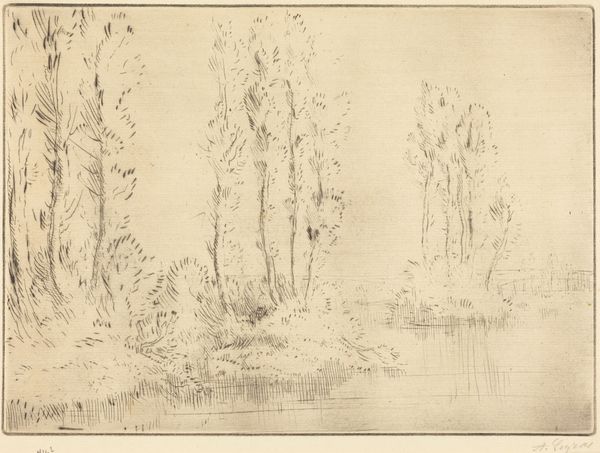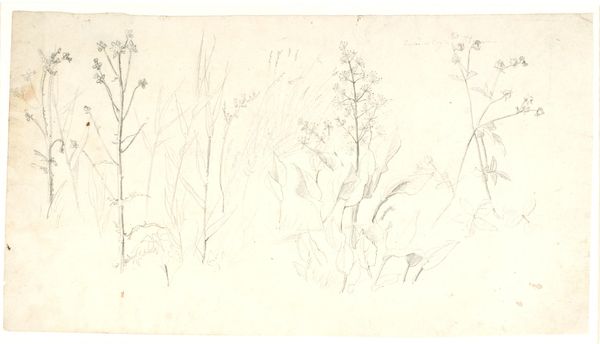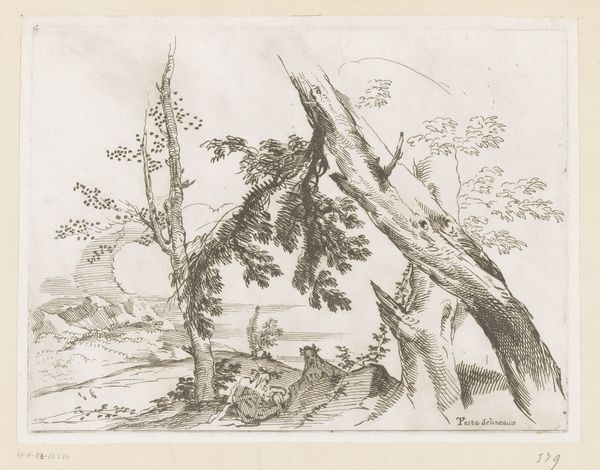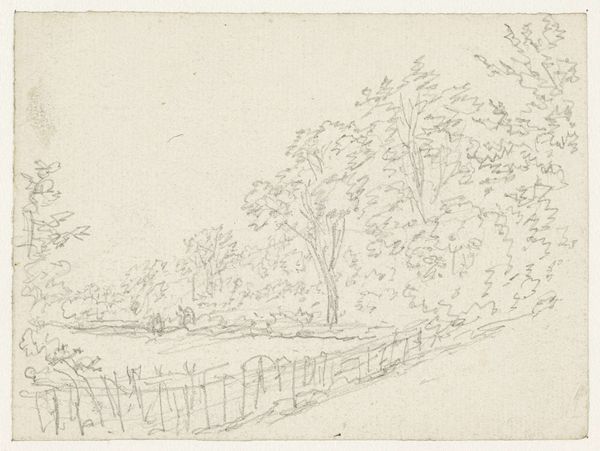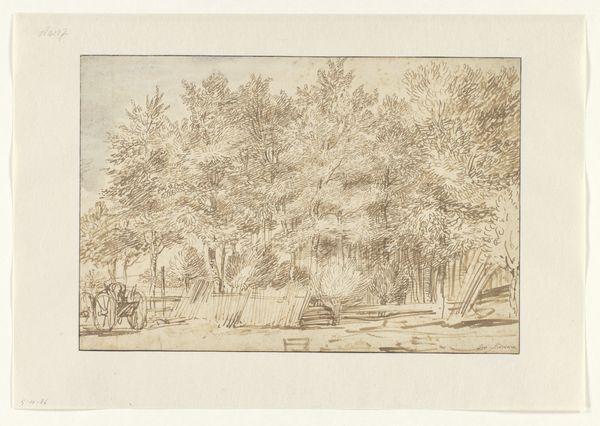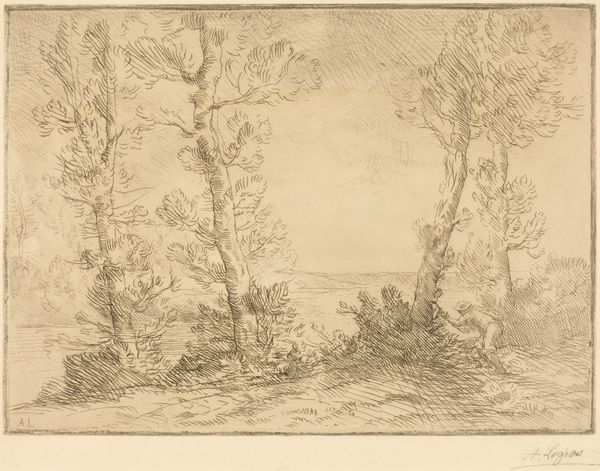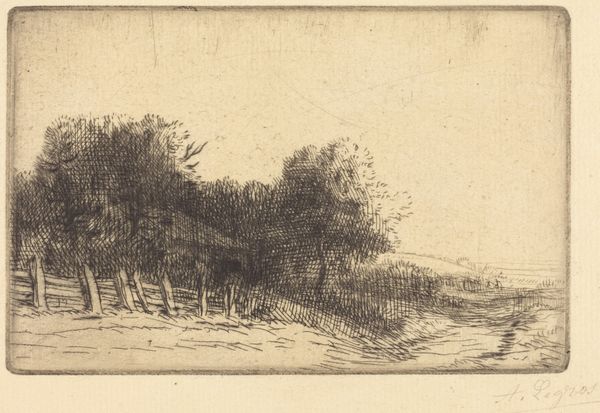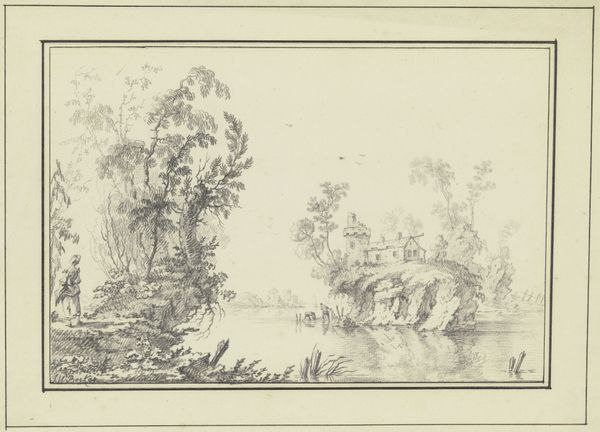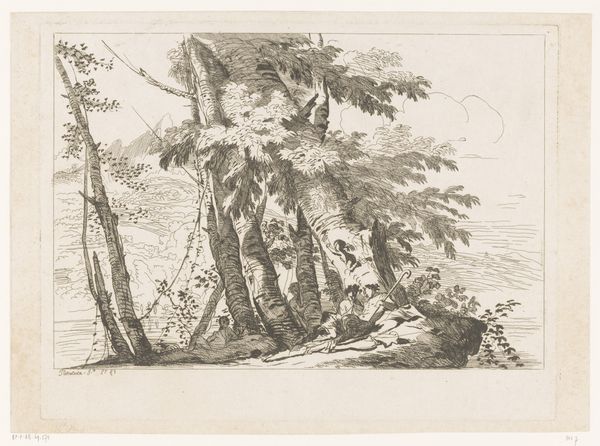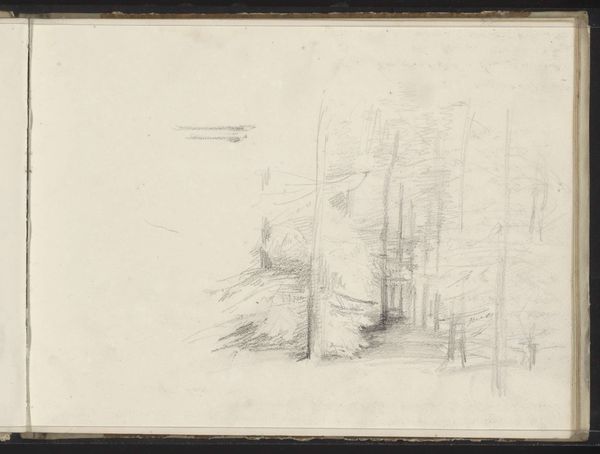
drawing, print, etching, ink
#
drawing
# print
#
etching
#
landscape
#
ink
Copyright: National Gallery of Art: CC0 1.0
Curator: The tranquility! It feels almost whispered. Looking at Alphonse Legros' print "Along the River" rendered in ink through etching and drawing, I immediately sense a hush, a retreat. Editor: Yes, the very lack of detail invites contemplation. As a landscape, it presents a very interesting, and frankly, somewhat unusual case. One can feel the socio-political context that shaped artistic preference at the time of its making. Legros was active during a period of considerable upheaval and transformation in France and beyond. How might this image speak to, or perhaps retreat from, that context? Curator: It’s true, the composition shies away from overt drama, presenting instead an intimacy with nature. I detect symbolic resonances in its stillness, as if the river holds not just water, but the reflections of collective memory and resilience—themes echoed across different times. Editor: A compelling point! And thinking about its presentation in spaces such as this one—how might it serve as a counterpoint to larger narratives around national identity or industrial progress typically promoted by art institutions? It certainly speaks to shifting attitudes toward the pastoral. Curator: Absolutely. The print resists grandiose pronouncements and rather engages with a quiet dialogue of permanence against transience, symbolized perhaps by water, by the subtle gestures of nature depicted with delicate, repeated lines. These could be read almost as meditations of the spirit, of personal journeys along larger historical currents. Editor: Do you think the repetitive patterns in the depiction of foliage have to do with a specific approach to the artistic rendering of 'nature'? And to that point, how do we grapple with ideas of authenticity or imitation as we confront works about nature made in artificial settings? Curator: I believe these marks act more as expressions of the human connection to nature than representations of nature itself. This isn't an attempt to copy nature but a translation of feeling—a visualization of inner space mapped onto the external landscape. Editor: Very well put. It underscores how Legros may have invited viewers towards intimate, reflective experiences—engaging them not just with his art but their internal landscapes. Curator: Seeing “Along the River" offers more than a mere landscape; it is, indeed, an invitation. A reminder that even in the quietest scenes, profound histories reside. Editor: I agree. Thinking of the image within institutional walls allows us to examine our continuous cultural dialogue and how that's informed, reflected and influenced through art history itself.
Comments
No comments
Be the first to comment and join the conversation on the ultimate creative platform.
